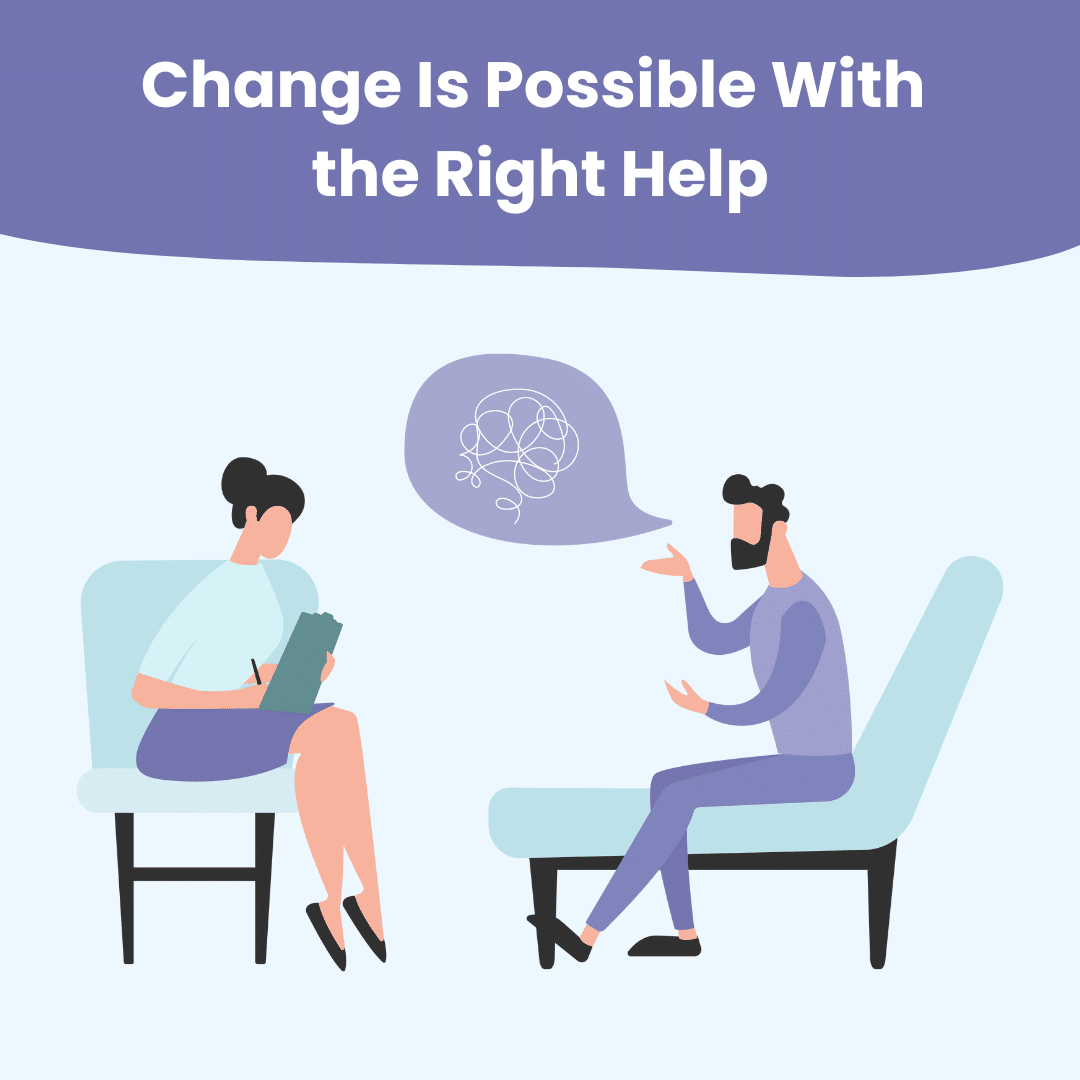
- Updated on 4 July 2024
This piece is produced in collaboration with DTAP Clinic, A GP+ clinic with a special focus on men’s health, women’s health and sexual health.
Whether emotional or physical, trauma can leave lasting impacts on our well-being. When confronted with traumatic events, our body instinctively releases hormones like cortisol and adrenaline to prime us for immediate action.
These reactions manifest as:
Freeze – Feeling as though you are trapped or unable to act
- Flop – Complying with a situation without the ability to resist
Fight – Actively defending oneself or confronting the threat
- Flight – Escaping or distancing oneself from the danger
Fawn – Appeasing or placating those causing harm
However, the effects of trauma do not end once the event has passed. Persistent stress signs can affect both mental trauma and physical health.
This interplay can subsequently influence our thoughts, emotions, and behaviours in profound ways.
It is also crucial to recognise that everyone’s experience with trauma is different and that all reactions and responses are valid.
This article will expand on the nature of trauma, the physiological repercussions of traumatic experiences, and healing trauma in the body.
This Article Contains:
What Is Trauma?
Trauma is when someone experiences distressing situations either in childhood or current life.
A person can have several types and responses to trauma, such as emotional, physical, and psychological.
However, any situation that threatens the person, either physically or emotionally, can lead to trauma.
If a person has trauma, they may struggle with feelings of helplessness, shock, grief, and fear.
During a distressing event, the person may find it hard to acknowledge their need for support.
The hesitation might occur due to the belief that whatever is happening to them is ‘normal’ or experienced by everyone.
Only through professional and social support might a person start to recognise that the incidents they went through are not normal or okay. Due to this, the affected person might find it hard to process their experiences.
Other than emotional distress, the person might also have physical symptoms, which leads to a strong connection between trauma and physical health.
The persistence and severity of these symptoms can also indicate signs of a deeper issue, such as post-traumatic stress disorder (PTSD).
Below are the different types of trauma:
Acute trauma: Arises from a single distressing event (eg road accident).
Chronic trauma: Results from prolonged exposure to highly stressful events (eg child abuse or domestic violence).
Complex trauma: Occurs due to exposure to multiple traumatic events.
Furthermore, there are other less common types of trauma, like secondary or vicarious trauma.
Vicarious trauma affects those who, while not directly experiencing the traumatic event, are in close contact with someone who has. For example, a person can develop vicarious trauma when witnessing a murder, accident, or abuse happening to someone else.
Adverse Childhood Experiences
Adverse Childhood Experiences (ACEs) refers to distressing events that one may have faced in their childhood, especially around 0-17 years of age.
Some examples of ACEs include:
- Violence
- Abuse
- Neglect
- Domestic violence
- Traumatic loss of a family member
Furthermore, the child’s environment while growing up has a significant potential in shaping their lives.
For example, a person has a high chance of developing trauma if they lived in a household with:
- Substance misuses issues
- Parental separation
- Parental gaslighting
- Mental health challenges (ie one or more family members having depression, PTSD etc)
- Family members being in prison
ACEs can have several different types and intensities of impact on a person. In fact, there is a strong link between trauma and physical health, especially when the trauma is chronic.
Research shows that interpersonal trauma, especially, can lead to poorer physical health.
Moreover, ACEs can affect academic and work performance, social relationships, self-esteem, sense of self, and social support.

Effects of Trauma on the Body
Chronic trauma profoundly impacts not only the mind but also the body.
While many associate trauma primarily with psychological signs, the impact of trauma on physical health can be equally distressing.
People who have experienced traumatic experiences might initially approach medical professionals with physical complaints.
They may usually be unaware of the underlying trauma-induced causes.
Biology of Trauma
Trauma significantly affects physical health through various biological mechanisms. One primary impact is on the limbic system, which regulates emotions and memory.
Traumatic experiences can alter its functioning and lead to intense or extreme emotional reactions.
Additionally, trauma influences the hypothalamic–pituitary–adrenal (HPA) axis, causing inconsistent cortisol levels.
Elevated cortisol can weaken the immune system, making people more prone to illnesses.
Neurotransmitter imbalances also occur from trauma, particularly affecting arousal and the endogenous opioid systems. This can result in increased anxiety (eg generalised anxiety disorder) and altered pain perception.
Adverse childhood experiences (ACEs), such as abuse or neglect, affect brain development.
They also increase the risk of interpersonal violence in adulthood and predispose individuals to chronic diseases, mental disorders, and substance abuse.
Physical Effects of Trauma
Trauma can lead to several physical health problems. Some of which include:
- Sleep disorders
- Gastrointestinal issues
- Cardiovascular issues
- Neurological problems
- Musculoskeletal conditions
- Respiratory issues
- Dermatological disorders
Key Facts
A 2018 study found that childhood traumatic events (CTEs) were more common among people living with fibromyalgia (ie musculoskeletal condition).
Moreover, another 2020 research showed that people who experienced trauma of any kind in childhood had a high risk of developing fibromyalgia later in life.
Additionally, a person can develop urological issues and substance use disorders because of trauma.

Somatisation
Somatisation, stemming from the Greek word ‘soma,’ meaning body, refers to the conversion of psychological distress into physical symptoms.
It manifests as a wide array of bodily complaints, such as joint pain or temporary vision loss, despite the absence of an underlying physical cause.
These symptoms are undeniably real, like how nausea eventually leads to actual vomiting, even without any digestive issues.
It is crucial to distinguish somatisation as a symptom rather than a diagnosis. Typically, it is part of conditions like somatic symptom disorder and conversion disorder, although it can co-occur with other ailments.
Seeking help from a qualified counsellor is advisable for those struggling with somatisation.
Somatisation is a common human experience, with people occasionally vomiting due to anxiety, experiencing stress-induced headaches, or feeling physically debilitated after trauma.
However, it transforms into a clinical concern when it persists and causes significant distress.

Hyperarousal
Hyperarousal is a heightened state of alertness that occurs when individuals afflicted by trauma mentally revisit their traumatic experiences.
Despite the absence of real danger, their bodies respond as if it were imminent. Hyperarousal causes prolonged stress even post-trauma.
Symptoms of hyperarousal include:
Sleep disturbances: Insomnia and recurring nightmares
Concentration difficulties: Impaired focus and cognitive function
Irritability: A sense of annoyance and frustration
Anger and outbursts: Sudden, intense bursts of rage
Panic: Overwhelming anxiety and panic attacks
Constant worry: A perpetual state of apprehension
Easy startle response: Exaggerated reactions to stimuli
Self-destructive behaviour: Risky actions, such as reckless driving or excessive drinking
Profound guilt and shame: An overwhelming burden of self-blame
In children, hyperarousal often manifests through sleep disturbances and trauma-related play.
These symptoms typically coincide with flashbacks, emotional numbing, and avoidance of trauma triggers.
Sleep Disturbances
Sleep disturbances resulting from trauma are not uncommon. Following a traumatic experience, people often develop problems with sleeping well.
These may manifest as delayed reactions, including symptoms such as depression, fatigue, nightmares, and, in more severe cases, sleep disorders.
When these issues persist and disrupt daily life, they may indicate the presence of post-traumatic stress.
Although ongoing research seeks to elucidate the precise mechanisms at play, current findings suggest that rapid eye movement (REM) sleep experiences the most significant disruption.
REM sleep plays a pivotal role in storing memories and emotional processing. We see vivid dreams in this stage of sleep.
Trauma survivors frequently experience disturbing dreams and nightmares. These dreams can either directly reenact the traumatic incident or incorporate elements of related emotions, details, and symbols.
Researchers say that trauma-related dreams stem from the brain’s innate fear response, potentially serving as a means for the mind to confront and process the traumatic experience.
Although rare, trauma survivors may encounter other sleep disorders from their traumatic experiences. These include nightmare disorder, periodic limb movement disorder, sleep terrors, and parasomnias such as REM sleep behaviour disorder.
Each of these disorders presents its own unique challenges and requires tailored approaches to intervention and management.
Healing Trauma in the Body
Trauma can leave deep emotional scars that manifest not only in the mind but also in the body. Various therapeutic approaches have been developed to address this connection between psychological trauma and bodily experiences.
Healing trauma in the body involves a nuanced understanding of the interconnectedness of the mind and body. While approaches like CPT and PE primarily target cognitive aspects, EMDR and SE™ delve into the somatic experiences associated with trauma.
Talk therapy, when administered by skilled therapists online, can accompany these methods by shedding light on the broader impact of trauma across various life domains.
When seeking trauma therapy, consulting with a qualified counsellor who specialises in the chosen modality is essential.
Cognitive Processing Therapy (CPT)
CPT is similar to cognitive behavioural therapy (CBT). During therapy, a therapist might use CPT techniques to identify and replace automatic negative thoughts (ANT).
ANTs are negative and random thoughts that a person has about themselves. These thoughts are unwanted and can cause distress or anxiety.
However, CPT tools such as Socratic questioning are a structured way of exploring a thought from several different angles and for many purposes (eg identifying root causes and understanding complex emotions).
During therapy, the client also learns important life skills that can help them manage their emotions that occur due to past traumatic experiences.
The American Psychiatric Association (APA) strongly endorses CPT as a recommended treatment for Post-Traumatic Stress Disorder (PTSD).
Prolonged Exposure Therapy (PE)
PE is a type of therapy where a psychotherapist may use evidence-based techniques to help the client gradually confront trauma-related memories and emotions.
The main aim of this therapy is to avoid triggering the person more while helping them overcome and process their trauma at the same time.
Eventually, the person may start to understand that their memories of the trauma cannot harm them.
By desensitising the emotions linked to trauma, the person starts to gain a strong sense of control and autonomy.
Desensitisation refers to helping someone overcome their trauma or fear by slowly introducing them to the thing (ie traumatic memories, in this case) they fear.
Eye Movement Desensitisation and Reprocessing (EMDR)
EMDR is a type of therapy that helps reduce the negative emotions associated with specific traumatic memories.
For example, if a person has a fear of swimming due to a negative experience (ie drowning), they might fear that they will drown every time they swim. EMDR helps remove the thought “I’ll drown” and replace it with facts and reassurance.
Hence, the person might start to believe their rational voice.
Somatic Experiencing (SE™)
Developed by trauma researcher Peter A. Levine, SE™ helps individuals:
Recognise trauma symptoms
Access internal resources for healing
Safely revisit traumatic memories for processing
SE™ empowers individuals to address the somatic aspects of trauma and helps develop a deep sense of resilience.
Working with a somatic experiencing practitioner and getting help for physical health issues caused by trauma can be a transformative experience.
Talk Therapy
Talk therapy, though primarily focused on cognitive aspects, can provide powerful insights into the psychological and physical impact of trauma.
It can explore how trauma affects mental health, physical well-being, relationships, core beliefs, and one’s worldview.
Cognitive Behavioural Therapy (CBT) and psychodynamic therapy have efficiently addressed trauma-related issues.
These therapeutic modalities help understand the connection of thoughts, emotions, and sensations tied to past trauma.

Cognitive Behavioural Therapy (CBT)
There are many types of strategies within CBT that can help with trauma-related issues. However, the most common approach professionals use is trauma-focused cognitive-behavioural therapy (TF – CBT).
The main aim of TF-CBT is to help clients identify and change their negative thought patterns. Further, the therapist may also help with identifying cognitive distortions.
Cognitive distortions include:
- Overgeneralisation
- Black-and-white (or all-or-nothing) thinking
- Jumping to conclusions
- Filtering out the positives
The mental health expert may also help the person look at their trauma from a fresh perspective or an objective point of view.
In TF-CBT, the professional may help the person confront their trauma through gradual exposure in a controlled environment. The gradual exposure helps prevent re-triggering any memories.
Through CBT, the person may:
- Learn how to overcome and avoid maladaptive behaviours
- Improve their self-esteem
- Regain a sense of self and confidence
- Develop a strong personality
Takeaway
Trauma is a complex and heavy topic, but understanding the impact of trauma can help us handle it better.
Trauma occurs when someone goes through painful or distressing situations, either in childhood or later in life. It can take many forms, like emotional, physical, or psychological, and can lead to feelings of helplessness, fear, and grief.
Moreover, trauma can also affect physical health and lead to issues such as sleep disorders, gastrointestinal problems, and even chronic conditions such as arthritis. Different types of trauma, such as acute, chronic, and complex, all require different approaches to healing.
Professional and social support can play an important role in healing from trauma. Therapy, including cognitive processing therapy and somatic experiencing, can be incredibly helpful in processing trauma and improving overall well-being.
So, if you or someone you know is dealing with trauma, remember that support is available, and it’s okay to seek help.



